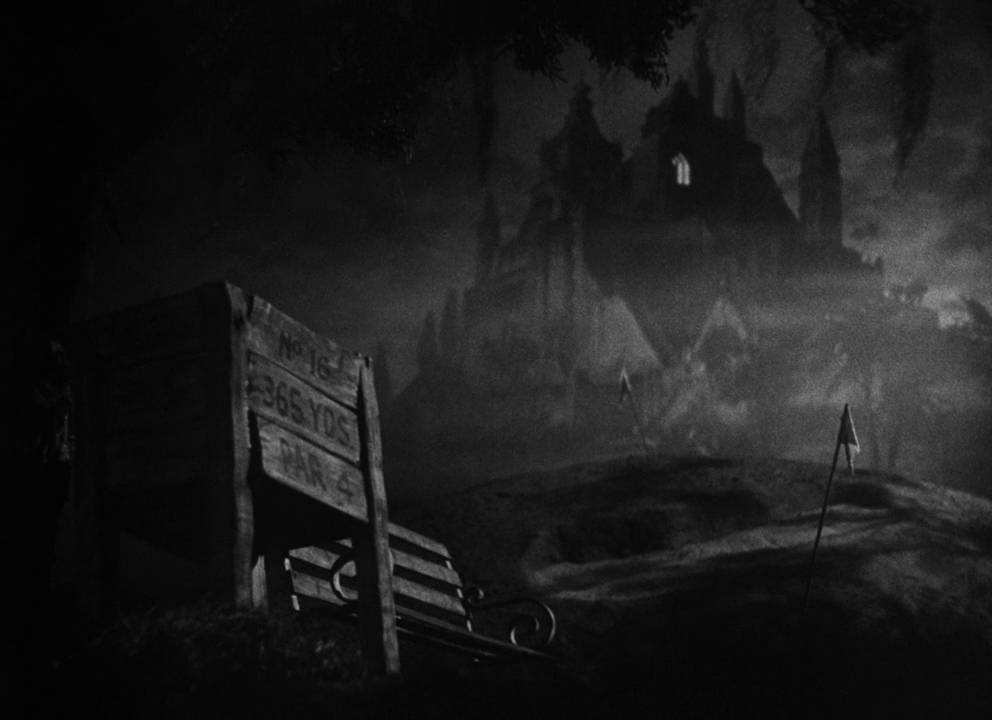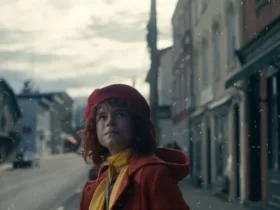So you are here in the search for How to write a tragic film story? and we will be more than happy to help you.
Any film or artwork dealing with melancholy themes that lead to a dreadful, disastrous conclusion is referred to as a tragedy, like Chinatown, a 1974 American neo-noir mystery film directed by Roman Polanski, or Glory a 1989 American historical war drama film directed by Edward Zwick.
It’s crucial to first select what kind of screenplay you want to write before laying out the design and structure. To avoid turning a comedy into a tragedy halfway through your screenplay, stick to the beginning and ending limitations. Your script will lack a firm framework if you write without a blueprint.
To avoid your plot collapsing in the middle, you’ll want to develop your basic structure and framework. How do you go about doing this? This is accomplished by first determining how your screenplay ends and then going back to determine the opening.

Knowing your climax gives you a goal to work toward and provides your characters a road to pursue. Imagine attempting to travel from Los Angeles to Manhattan or Seattle without a map. That’s what happens when you don’t have a blueprint to follow. It’s like going on a vacation without a map, and it only leads to a dead end. If you don’t know where you’re going with your characters or how you’re going to end your story, you’re going to take a lot of detours and probably get lost. Even if you change you’re ending several times, you must have one when you start writing your script.
Once you’ve decided on your finale, all of the scenes leading up to the climax will have a place to go. Many people claim that when they start writing, they don’t know the ending and just let their characters take them where they want to go. Let me guarantee you that these authors and their characters are doomed. There is no shortcut way to write a tragic film story without a proper framework or plan.
Pros and Cons of sad and tragic ending of a film

You can usually defeat your character (and possibly pull other people down with her) by exploiting a fatal fault in her personality. Let’s discuss the pros and cons of ending a film with a tragedy.
Pros
- Can be therapeutic since readers feel that their own circumstances aren’t so bad in comparison.
- Warns readers about the dangers of poor behavior because the character gets her sweet revenge, which can be satisfying.
- Can feel more meaningful and true to life than a happy conclusion, because everyone dies in the end!
Cons
- Can be dismal.
- If your main character dies, there’s no way to write a sequel in future.
- Readers may feel duped if the main character didn’t deserve her horrible fate.
Now let us take an example from the film Godfather. The Godfather felt like a totally new kind of story to American audiences in the 1970s. Its origins, on the other hand, were quite old. The Godfather was resurrecting one of the oldest sensations of tragedy by conveying a story about larger-than-life passions colliding in a dark and dangerous world, offering American audiences their own equivalent of Hamlet or Oedipus.
And the end outcome was a huge success. The Godfather went on to become the highest-grossing film in history, surpassing Gone with the Wind and The Sound of Music in terms of worldwide revenues; it became an American classic that was repeatedly cited and reproduced. The Godfather’s plan for resurrecting old tragedy’s cognitive experience, allowed people to write their own modern tragedy.
Understanding tragedy from a Greek play, Oresteia written by Aeschylus

- Aeschylus’ Oresteia is the oldest full tragedy known. Although readers cannot say with certainty what the fictional world of tragedy was like before the Oresteia, it undoubtedly highlighted the gods’ supremacy over the people below. This essential genre rule is followed in the Oresteia script, which begins with a night watchman gazing up at the almighty sky and mourning his helpless lot below.
- By revealing the specific form of the watchman’s earthly powerlessness: he’s imprisoned on a castle roof, awaiting for a signal, the script offers its own unique twist to the established laws of tragedy. That signal will be transmitted by a chain of signal lights stretching from Troy to Greece, instructing the watchman on what to do.
- The signal lights’ simple dramatic action suggests right away that the new rule of this fictional world is that no action is accidental. It’s part of a chain reaction in which past actions reemerge in the present and resonate into the future, just as those signal lights do.
- This chain reaction occurs exactly as it does in the script. To get strong sailing winds for Troy, a king murders his daughter first. The king then returns from Troy and is assassinated by his wife, who is later assassinated by her vengeful son. One family’s assassination leads to the assassination of another.
- The two-step process for creating a fictional world can be found there. The Oresteia, for starters, connects itself with a well-known genre or subgenre: tragedy. Second, it invents a brand-new rule: flowing action.
- Following Aeschylus’s invention of tragedy with his jumping signal lights, subsequent Greek scriptwriters followed the same two-step procedure to invent their own new tragedies.
Because of the immense success of this two-step process, it has been used in every Oscar-winning tragic script ever written in Hollywood. Take, for example, the script for Citizen Kane, arguably Hollywood’s greatest famous tragedy.
The first scene of Citizen Kane introduces a “huge castle,” similar to the enormous castles walking by the Oresteia’s opening watchmen. And, like the Oresteia, Kane’s fictional world reflects previous misdeeds in the present, as Kane senior’s propensity to sacrifice family for money is repeated in his son’s devastation of his own connections.

The introduction of Kane, however, provides its own twist to this pre-existing story world by showing that Kane’s castle varies from the castles of prior tragic dramas in one essential manner. Kane’s castle hasn’t been passed down down the generations. Instead, Kane’s castle was built from the ground up in a single generation by one man.
The Kane script explains that the story world’s new law will be that individuals can gain great power that propels them beyond being kings and into godhood, allowing them to unleash magnificent, ego forms of destruction. Their money liberates their deepest passions, which, unfortunately, return to destroy them.
Comparing Oresteia with Citizen Kane which is directed by Orson Welles is a perfect know-how example of How to write a tragic film story?
In a tragedy, the main character, as well as those close to him or her, nearly always perish. This character MUST be pitiful with some defect that makes him fall, such as anger or pride, and that, finally, ends up turning him into a tragic hero who goes from a good fortune to a bad one that usually ends in death. Tragedies are, as the name implies, tragic. A good tragedy will cause the audience to cry and achieve cleansing at the conclusion.
- Also Read- Using Magic Mask To Remove Background In Davinci Resolve
- Also Read- How to Reverse a Clip in DaVinci Resolve ( Plus A Smooth Reverse Effect)
- Read- Move Premiere Pro Timeline to Davinci Resolve (XML Workflow)
How to write a tragic film story?

Read and preserve
Read some of your favorite tragedies from the past. Shakespeare, Euripides, and other classical authors will assist you in getting started, so don’t attempt anything unless you’re joined by them. Instead of starting to write out of nowhere, experience the sadness. As most tragedies follow the same basic line and the same principles (according to Aristotle) it is good that you take notes while you read. Keep an eye out for:
⦁ Time unit: Everything must take place inside the time limit. Don’t, for example, leap five years in the middle of a story.
⦁ Placement: Events must be placed in the same or a few locations rather than bouncing throughout the country.
⦁ Action unity: Everything the characters do must serve a purpose and affect some future event. Every coincidence must lead to something else. The storyline must be continuous and not episodic.
Think and plan
Make a list of all the characters and write a paragraph explaining each one’s personality, appearance, and motives. Do not leave out any of them, even if they only appear in a chapter, in an act, or in a scene. Set the scene: where will it take place? When is it? What’s going on at that location at that point in time?
Write
It normally takes a long time to write a novel or a play or a film. If you haste, you will become annoyed and fatigued. Make it a point to write a particular number of words every day. Something in the range of one to three pages. When you are inspired, you will most likely write a lot more, and when you are blocked, you will most likely not write anything. Set aside a certain amount of time each day to write.

Rewrite
Reviewing can be time-consuming. Don’t worry about how to write it as you go. Instead, imagine you just compared the books because they were both engaging and heartbreaking. Read it as though you’ve never done it before, and don’t be surprised if you come across anything that doesn’t quite persuade you. Don’t fix it yet! When you’ve finished reading the novel, go back to each of your underlined pages and fix what’s broken. While you’re highlighting, make notes with your thoughts so you don’t forget what you didn’t like.
Check and polish
Once you finish fixing the parts that you didn’t like at all, it is good that you have an additional opinion. Contact your pals or a professional editor for feedback and assistance in making mistakes. Keep in mind, though, that you have the last say.
Learn the basic characters
Despite the fact that each tragedy is unique in terms of characters and storylines, there are some basic tragedy tropes that apply to all literary works in the genre. A tragic hero (typically a person of high social significance) who experiences a huge fall and/or death as a result of some big action or omission, or a scapegoat (a person of little social value) who is involuntarily thrown into tragic circumstances beyond its control. Most tragedies will have any or all of the following sorts of characters:
⦁ The protagonist is the main figure, usually a tragic hero
⦁ The adversary of any person or thing that the protagonist opposes (often a villain, but not always)
⦁ Character side plates or counterparts, often associated with the protagonist or antagonist, that reveal or complicate some of the key aspects of the main characters
⦁ Stock characters are frequently utilized to accentuate or elaborate on a quality that emerges throughout the tragedy.
⦁ Narrators and choirs are not always present in each tragic piece, but they are a key feature of some of them and are frequently employed to connect directly with the audience.
Examine the tragic hero
A tragic hero is at the heart of almost every tragedy. In early Greek tragedies, the hero was frequently a deity, but as the genre developed, the tragic hero expanded to include heroes of combat as well as royalty or political people. For today’s tragic heroes, the basic rule of thumb is that the character must be morally powerful and inherently admirable to the viewer.
The tragic hero must suffer some type of downfall (known as the ‘hamartia,’ or ‘tragic error,’ frequently as a result of the character of arrogance (commonly thought of as pride, albeit one’s overreaching cultural/ethical boundaries).
The tragic hero frequently has some type of awareness or recognition of his terrible fate (this is referred to as an ‘anagnorisis’). He realizes there is no turning back at this point, and that he must leave the awful fate before playing with him.
The tragic hero must, above all, be sorrowful. This is due to the fact that it is doomed to fail, and an audience of encouragement or relief when the villain suffers misfortune. The fundamental tragedy of a sad job is that anybody may go through the type of agony that the hero goes through, and his demise must cleanse the audience of bad feelings.











Leave a Reply